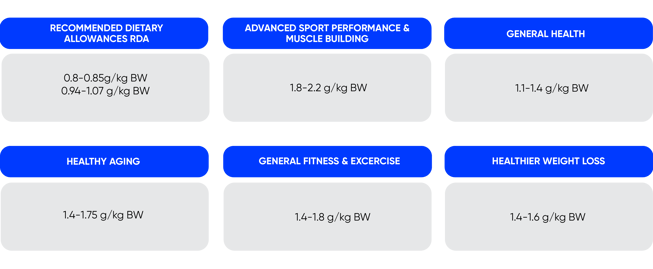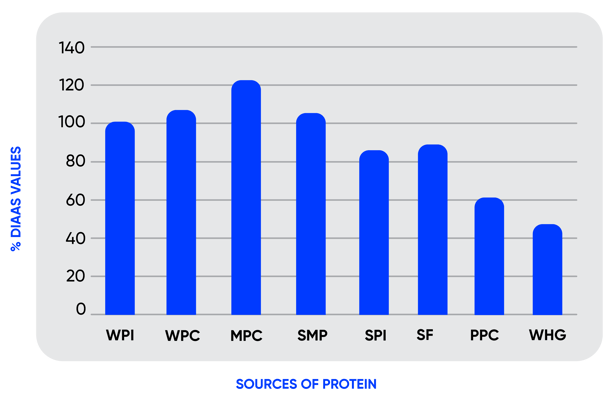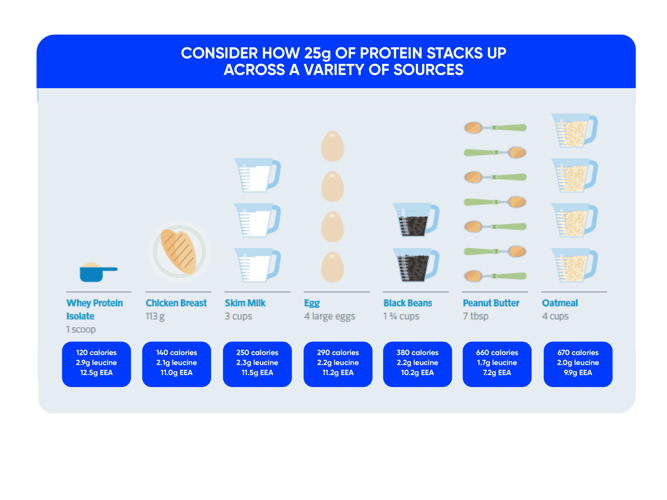Protein: Back to Basics
Posted by Lindsey Ormond, Director of Research & Development on Jun 21, 2022 4:47:37 PM

How important is dietary protein?
Protein has been a mainstay in the diet of bodybuilders, sport and fitness fanatics for years, but the last couple of decades have seen huge growth in appreciation of this key macronutrient in the diet of all ages, stages, needs and health goals. Often referred to as the “mainstreaming of the sports nutrition market”, high protein products appear to be everywhere and consumers can meet their protein needs in a variety of ways; from Greek yogurt and ultra-filtered milk to protein cookies and bread, to protein shakes, sparkling protein water, and bars. But what are the benefits of higher protein diets, to which demographic, and does it matter where it comes from?
Benefits of Protein
Everyone needs protein in their diet for basic physiological functioning. About 16% of a lean adult’s body mass is protein, while skeletal muscle tissue in general is closer to 90%. Although it has a critical structural role in the body through muscle and connective tissue, such as ligaments and tendons, it also plays a huge functional role in components such as antibodies for immune responses, transporters, hormones, enzymes and many more. When it comes to muscle mass and staying active, evidence shows that optimizing protein intake can help to maintain muscle mass, manage weight by enhancing satiety, improve longevity, enhance recovery from injury, illness, and bedrest, improve endurance performance, and even support a good night’s sleep (with certain types of protein).
How much is recommended and when?
The recommended daily allowance (RDA), set at 0.8g/kg body weight, is the level required to avoid deficiencies and for basic functioning. However, general scientific opinion and evidence demonstrates that optimal intakes are greater than this and are linked to age, activity level and health goal. As highlighted in table 1, intakes between 1.1 and 2.2g/kg body weight can help support physical demands on the body and optimize body composition and health outcomes.
Table 1. Protein Intake Recommendations (iPG, 2018 https://www.internationalproteinboard.org/protein-matters/protein-requirements.htm)

The western diet tends to have protein intake skewed to the evening but spreading protein intake throughout the day can mean taking advantage of protein’s ability to help maintain muscle mass and may even enhance satiety throughout the day. Aim for at least 20-30g at each meal and even at snacks, to reach your daily optimal intake.
Does the type of protein matter?
Protein can be found in many foods and our daily protein intake comes from a variety of sources. The scientific evidence around the benefits that different protein sources can provide continues to improve and it is the topic of much debate, particularly with new, more sophisticated techniques to measure protein quality, and the increased marketing and availability of plant proteins. The newest protein quality assessment method, DIAAS (digestible indispensable amino acids score), gives us the most accurate insight into how well a protein is absorbed by the gut, and thus the extent to which it can satisfy human physiological needs. As shown in table 2, animal source proteins, such as whey protein and milk protein, have a significantly higher protein quality compared to plant source proteins, such as soy, pea and whole-grain wheat. Utilizing higher quality proteins can be particularly beneficial at certain times or for certain groups, such as recovery from exercise, enhanced satiety for weight management or weight loss, aging population who require a higher leucine intake (whey protein is the highest dietary source of this key amino acid), or intense metabolic demands like post-operative recovery and bedrest.

Where can you get protein from?
The table below provides some good examples of dietary protein sources, including the amount of essential amino acids (EAAs) and the all-important branched-chain amino acid, leucine.

Resources
International Protein Board (2018). Protein Matters: The Need to Re-evaluate the Adequacy and Application of Protein Requirements. www.internationalproteinboard.org
USDEC (2018). A New Era for Protein: Why U.S. Dairy Delivers in the Crowded Protein Marketplace www.thinkusadairy.org
BASES (2022). The BASES Expert Statement on protein recommendations for athletes: amount, type and timing. www.bases.org.uk
Topics: HUMAN NUTRITION
